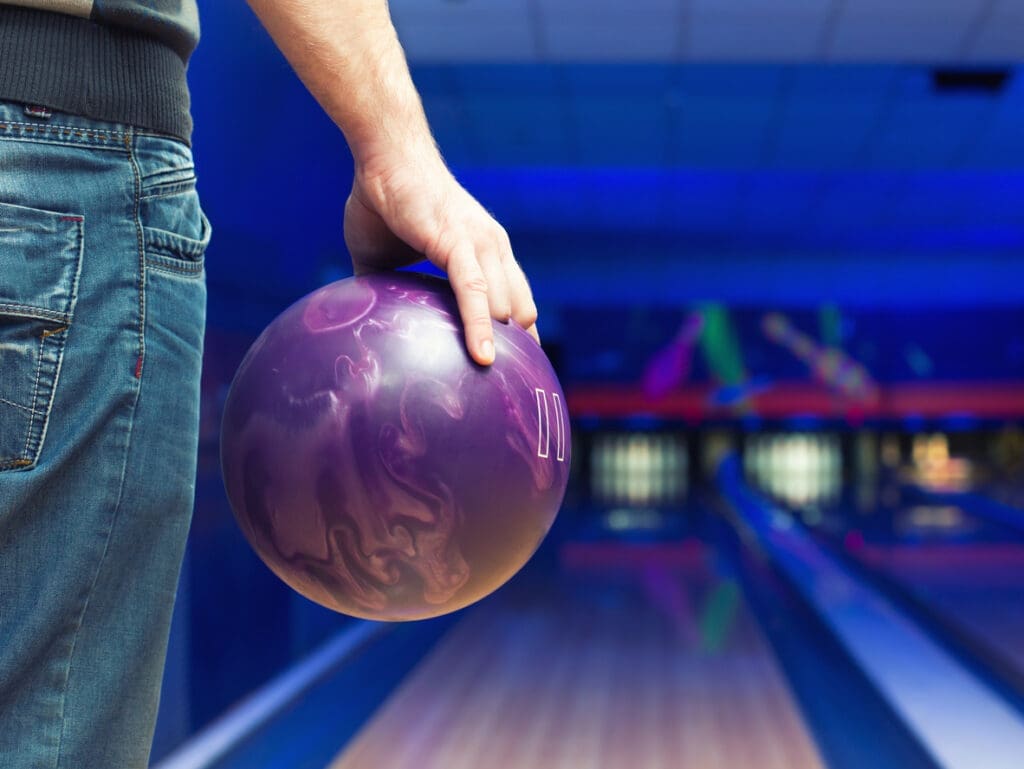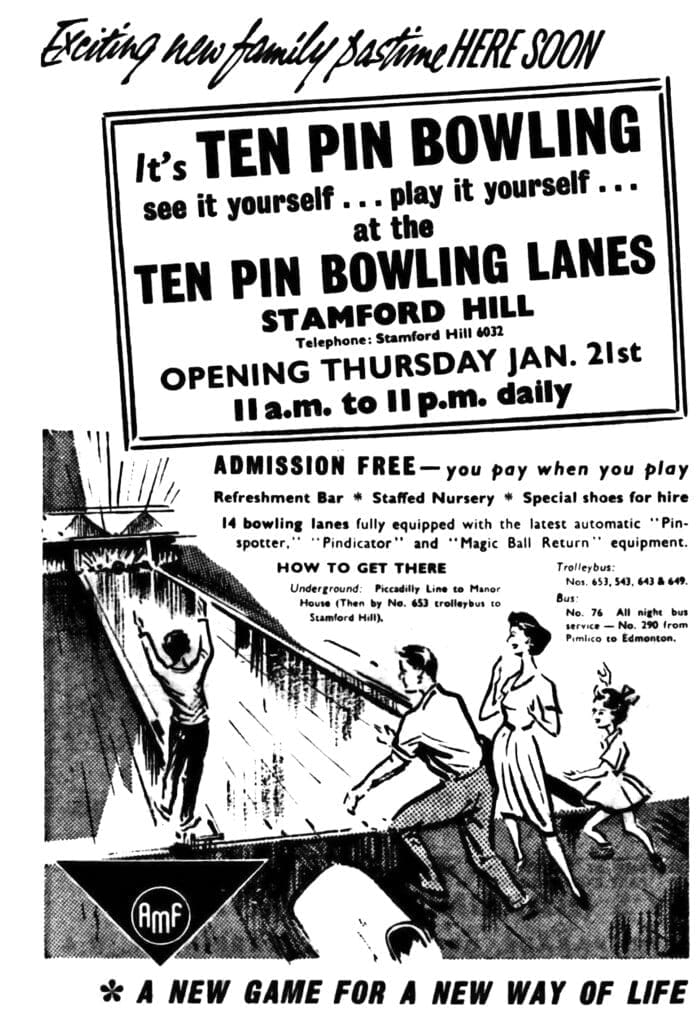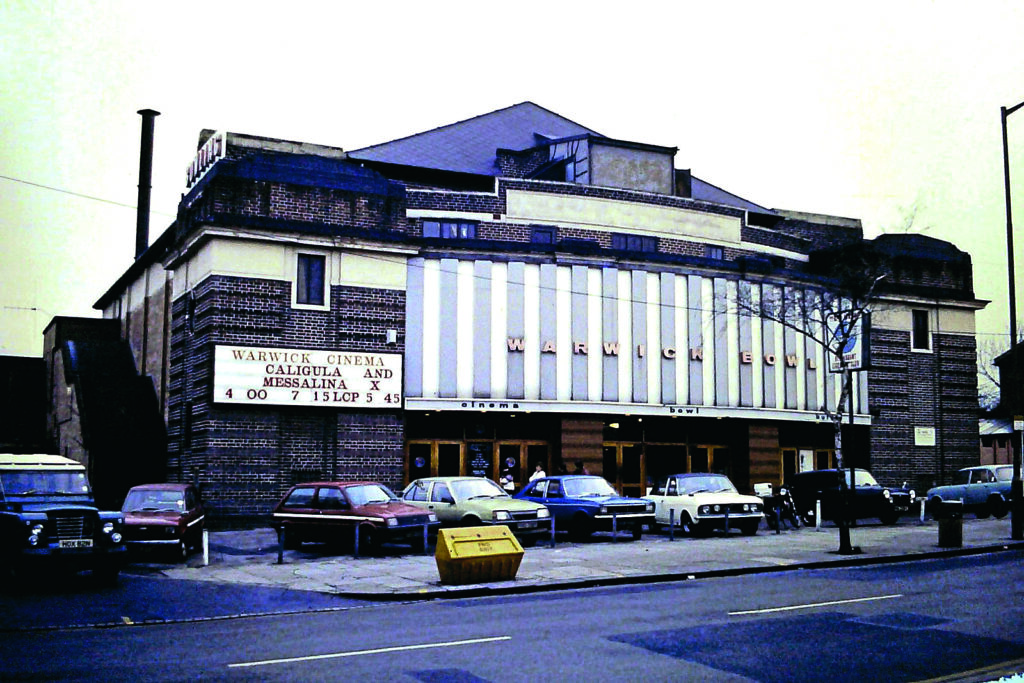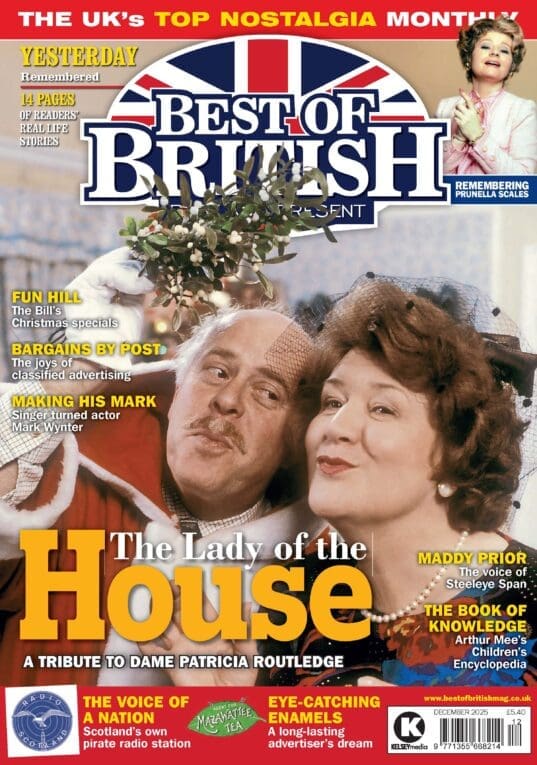Martin Handley looks back at the rise, fall and revival of tenpin bowling.

Tenpin bowling – is it a sport, is it a pastime, or is it plain that it’s both? Pictorial evidence from around 5200BC suggests ancient Egyptians were not averse to hurling balls at rudimentary skittles. The Greeks and the Romans followed suit. In Europe, the necessary skills have been practised for more than 500 years, with Germans being keen pioneers.
However, in the US, legislation became necessary to curb the incidence of gambling on the bowlers’ performances.
Enjoy more Best of British Magazine reading every month.
Click here to subscribe & save.
In 1841, a law was passed in Connecticut to ban what had evolved into ninepin bowling, with the skittles being placed in a diamond shape (1-2-3-2-1). To circumvent the ban, a 10th skittle (or pin) was added and the shape altered to the familiar triangle of 1-2-3-4. Presumably the wagers continued unabated.
By the 1880s, fully fledged bowling alleys were opened in the US and the rules governing the sport were standardised. During the 1920s alone, the number of alleys increased from 450 to around 2000. In 1936, a German named Gottfried Schmidt invented a mechanical pin setting device in his garage, which relieved the tedium of replacing them manually.
The governing body in the US was the American Bowling Congress (ABC), whose membership rose from 700,000 in 1940 to 4.5 million by 1963. President Harry S Truman had a bowling alley set up in the White House in 1947, although it’s not certain he ever used it. In the aftermath of World War Two, bowling alleys were set up in many US bases here in the UK. By this means, the British became aware of this new and exciting sport.
Around this time, the UK was desperately short of indoor leisure centres, with the notable exception of swimming baths. The first multi-sport indoor centre was on the site of the burned down Crystal Palace. This was the National Recreation Centre, and it followed the recommendations of the 1960 Wolfenden Report on sport in the community, which had highlighted the lack of facilities nationwide.
In this context, opening tenpin bowling centres was always likely to find favour and the UK’s first was in the former Super Cinema at Stamford Hill, north London. This opened on 21 January 1960, only three months after the cinema had closed. The equipment within was provided by the AMF (American Machine & Foundry) company, whose main business was setting up launch sites for guided missiles. AMF vice-president Frank White suggested bowling represented: “… a great contribution to human happiness.”

The new centre boasted 14 lanes, a fizzy drink fountain and a snack bar. Pin setting was now automatic, scorecards were illuminated and, to increase patronage, the first 10 days of bowling were offered free of charge. The opening ceremony was performed by Eamonn Andrews and guests were Henry Cooper, Carol Leslie, Douglas Fairbanks and Alec Bedser. There were two 21-inch CCTV screens, so that bowling parents could watch over youngsters amusing themselves in a remote playroom. Mountaineer John Hunt rolled the first ball, and it went straight into the gutter. It all seemed so promising. Yet, barely 10 years later, the centre closed on 27 June 1970. The building was demolished, and a supermarket stands there today.
The second centre to open was the Regal Bowl in Golders Green, north London. The building was originally an ice rink, then became the Regal Cinema from 1932 until 1956 and was converted to a bowling alley in time for its March 1960 opening. This failed to even make 10 years, closing on 20 February 1970. It, too, was demolished and an office block can be seen on the site.
Outside London, the King Alfred Leisure Centre in Hove, West Sussex was first to offer bowling facilities from 6 September 1960 when former cricketer Sir Jack Hobbs opened proceedings. It had 22 lanes and lasted until 1983, briefly reopening in 1986 but without success.
The first in the Midlands was in the former ABC Cinema at Wylde Green, Sutton Coldfield in Birmingham. Opened in March 1961, it closed 12 years later, and the site was given over to housing. This centre boasted 26 lanes over two floors. In the north of England, Top Rank opened a centre at Cheetham Hill, Manchester in August 1961. It closed 10 years later, and a DIY store now stands there.
Scotland saw its first strike (all 10 pins down with the first ball of a frame) at the Brunswick Hampden Bowl, Glasgow. Lasting only from June 1963 until May 1970, this enjoyed an even shorter lifespan. Lulu frequented the centre, and the players of Celtic and Rangers football clubs would hold derby bowling matches.
Not to be outdone, Scotlanes Llanelli Bowl introduced the sport to Wales from June 1963, on the ground floor of the former Ritz Super Ballroom. The bowling alley closed in the early 1980s, becoming a family leisure centre containing pool tables, video games and miniature dodgems, and today is a soft play area. The first-floor ballroom, which featured a revolving stage, was converted into a roller disco before becoming a snooker hall now owned by former world snooker champion Terry Griffiths.
If all this suggests that tenpin bowling’s first heyday was remarkably short, I’m here to tell you that you’re right. It was. Nevertheless, the British Tenpin Association was created to oversee the sport in 1961. Magazines sprang up to cater for the interest.

In the 1960s, there had been a modicum of television coverage before a renewed effort to inspire enthusiasm in the viewing public was made in 1979 with Yorkshire TV’s Pro-Celebrity Bowling. This featured swimmer David Wilkie and singer Clodagh Rodgers and was broadcast from the AMF Bowling Centre in the Merrion Centre, Leeds. In 1982 the concept was revived by the same broadcaster, when snooker player Steve Davis, and singers Vince Hill and Patti Boulaye were among those striving for strikes and struggling for spares.
The sport was in decline by then, though. There were 12,000 centres worldwide in 1965. Only a third of these remained in business by 2013. Indeed, in both 2001 and 2012, AMF filed for bankruptcy. League participation declined by 40% between 1980 and 1993 – though ironically the number of bowlers increased by 10% during that time, which indicates the increasing extent to which bowling was perceived as a leisure pastime, as distinct from a competitive sport.
At elite level, there has been a world championship since 1954 and since 1963 this event has taken place every four years. Tenpin bowling has never been accepted into the Olympic Games, despite numerous attempts to gain inclusion.
It’s not all doom and gloom now, though. There has been a notable UK resurgence in both interest and participation in recent years, assisted by the development of retro-styled alleys awash with trappings of 1950s Americana. Modern centres incorporate latter-day innovations such as dedicated VIP lanes offering personalised service, computerised scoring and cameras for instant replaying of good (or bad) shots.
The number of bowling centres UK-wide has increased again from 50 in the mid-1980s to around 200 by 2006. League participation rose by 20% in the two years 2015-2017. One in three Britons played the sport at some point in 2016. The opening of a new £2m 14-lane bowling centre, to be operated by Superbowl UK, as part of a major leisure and retail park in Bishop Auckland, County Durham is expected to open later this year. Here in the UK, we do intend to keep the ball rolling.

